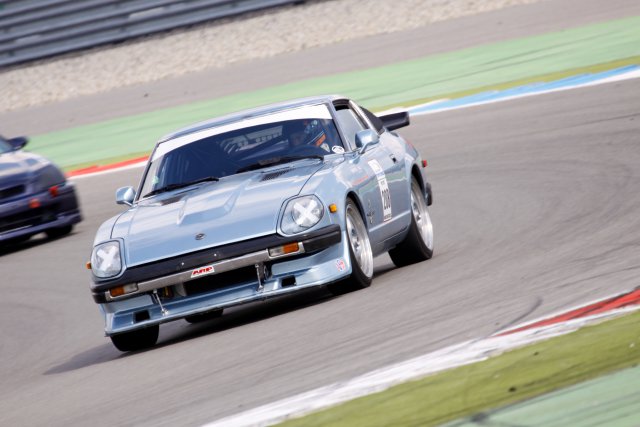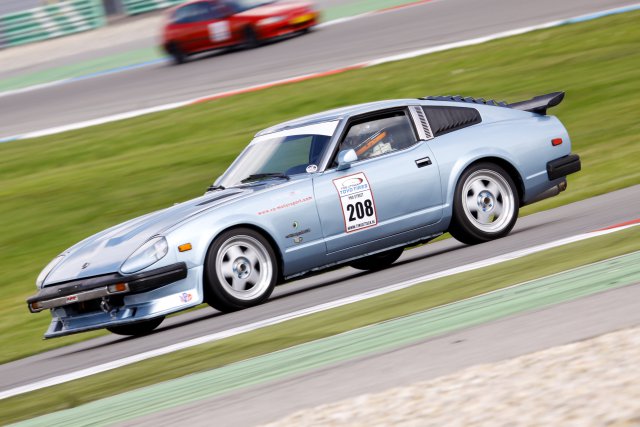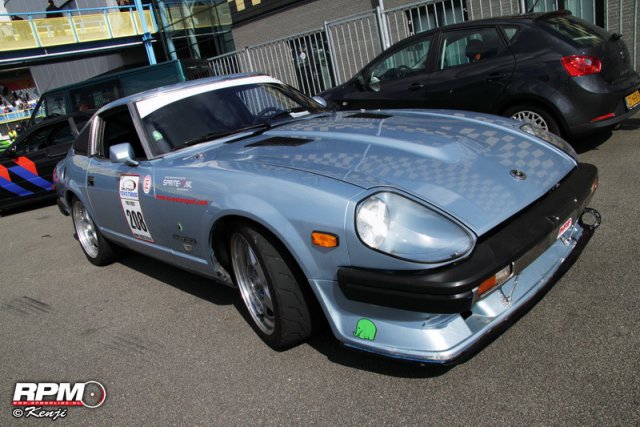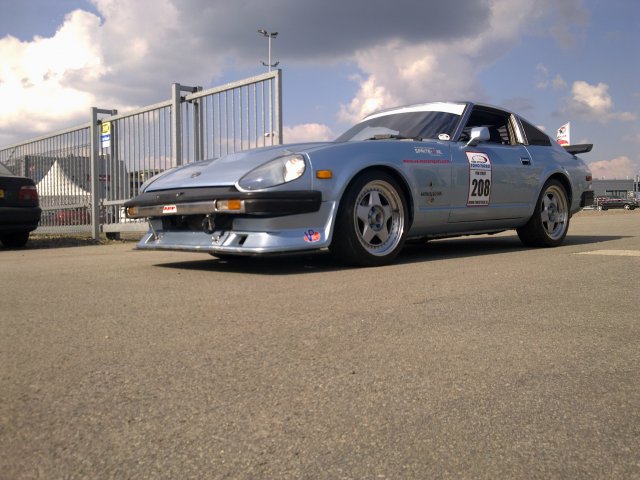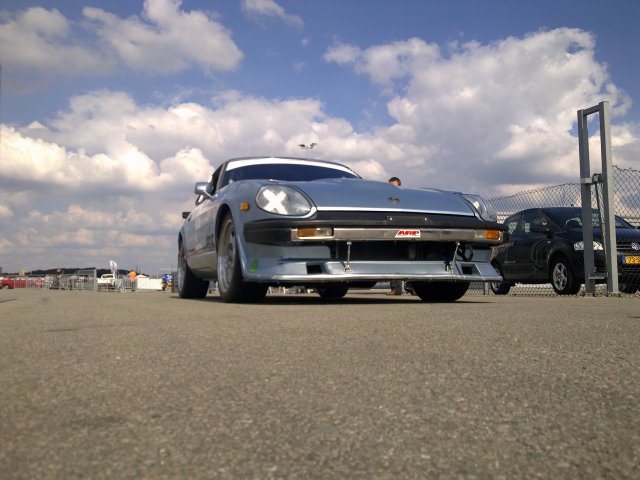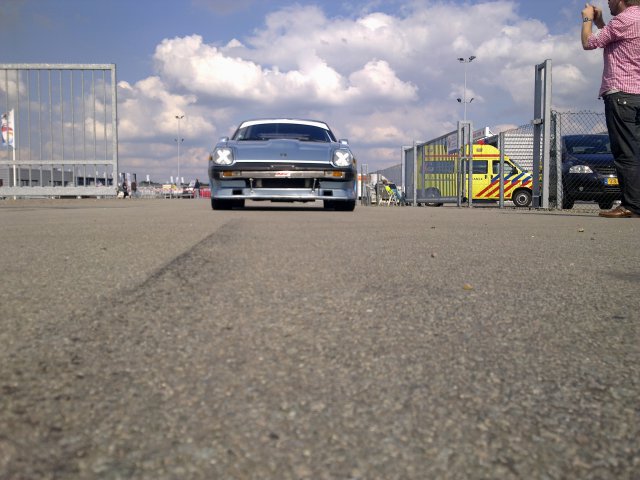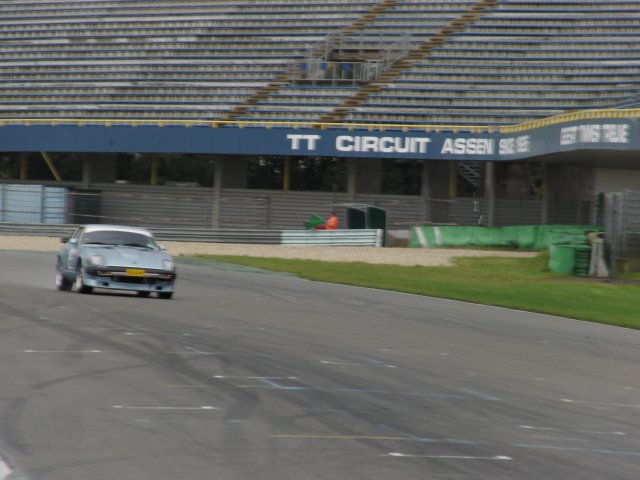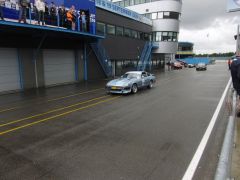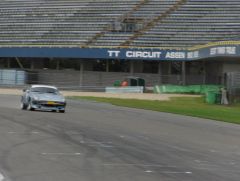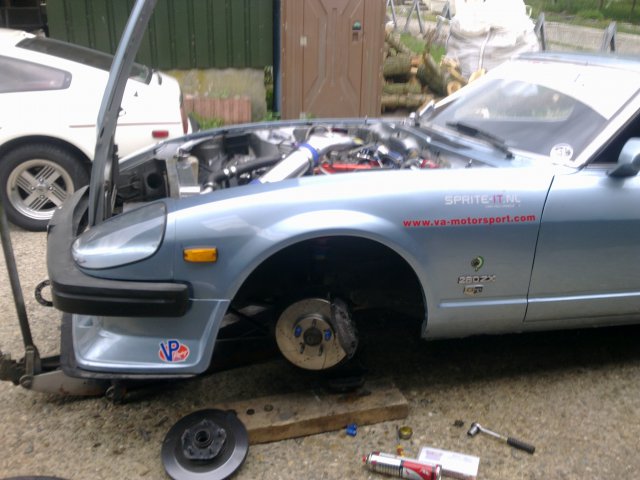-
Posts
1258 -
Joined
-
Last visited
-
Days Won
2
Content Type
Profiles
Forums
Blogs
Events
Gallery
Downloads
Store
Everything posted by frank280zx
-

{J REX from TEAM SHOGUN} S130 with S13 coil overs
frank280zx replied to ovenfood's topic in S130 Series - 280ZX
haha use the r31 skyline mounts .. it bolts right in .... -
any engine non nissan will go in as easy as a nissan engine.. brand has nothing to do with the ease of swap, apart from an RB25 that bolts up with r31 engine mounts. But then you just did the bolting up witch is not the hard part! BMW line 6 fits as easy as any onther engine you mentioned i evan had a m60b40 (bmw v8) in a s130!.. but if you say 500+ mark cheap !!!.. id say domestic .. As the ate cheap and allot of bang for the buck!
-
they are stock on any late 82 or 83 euro ZX.. and i bet they came on other models aswel
-
ZX PROS Lower center of gravity than its predecessor (240z) Near 50/50 weight distributionso does a s30 Power options (steering, windows, locks, etc) the 79 ZX had roll op windows and most had non power steering High Speed Stability Better MPGs [/b] a 240 in good tuned 240 the run the same as a good tuned 280 Rear disc brakes ZX CONS Much heavier than (240z)a 79 is lighter than anything after 74 Automaticget a standard transmission Semi-trailing Rear Armsso why is that con? ever heard of an M3
-

Hella vs Cibie vs Bosch vs AutoPAL H4 Housings
frank280zx replied to 240Z_Master's topic in Miscellaneous Tech
Actually it is intresting to see what influence napoleon had on the world Heres some insight: About a quarter of the world drives on the left, and the countries that do are mostly old British colonies. This strange quirk perplexes the rest of the world; but there is a perfectly good reason. In the past, almost everybody travelled on the left side of the road because that was the most sensible option for feudal, violent societies. Since most people are right-handed, swordsmen preferred to keep to the left in order to have their right arm nearer to an opponent and their scabbard further from him. Moreover, it reduced the chance of the scabbard (worn on the left) hitting other people. Furthermore, a right-handed person finds it easier to mount a horse from the left side of the horse, and it would be very difficult to do otherwise if wearing a sword (which would be worn on the left). It is safer to mount and dismount towards the side of the road, rather than in the middle of traffic, so if one mounts on the left, then the horse should be ridden on the left side of the road. In the late 1700s, however, teamsters in France and the United States began hauling farm products in big wagons pulled by several pairs of horses. These wagons had no driver's seat; instead the driver sat on the left rear horse, so he could keep his right arm free to lash the team. Since he was sitting on the left, he naturally wanted everybody to pass on the left so he could look down and make sure he kept clear of the oncoming wagon’s wheels. Therefore he kept to the right side of the road. In addition, the French Revolution of 1789 gave a huge impetus to right-hand travel in Europe. The fact is, before the Revolution, the aristocracy travelled on the left of the road, forcing the peasantry over to the right, but after the storming of the Bastille and the subsequent events, aristocrats preferred to keep a low profile and joined the peasants on the right. An official keep-right rule was introduced in Paris in 1794, more or less parallel to Denmark, where driving on the right had been made compulsory in 1793. Later, Napoleon's conquests spread the new rightism to the Low Countries (Belgium, the Netherlands and Luxembourg), Switzerland, Germany, Poland, Russia and many parts of Spain and Italy. The states that had resisted Napoleon kept left – Britain, the Austro-Hungarian Empire and Portugal. This European division, between the left- and right-hand nations would remain fixed for more than 100 years, until after the First World War. Although left-driving Sweden ceded Finland to right-driving Russia after the Russo-Swedish War (1808-1809), Swedish law – including traffic regulations – remained valid in Finland for another 50 years. It wasn’t until 1858 that an Imperial Russian decree made Finland swap sides. The trend among nations over the years has been toward driving on the right, but Britain has done its best to stave off global homogenisation. With the expansion of travel and road building in the 1800s, traffic regulations were made in every country. Left-hand driving was made mandatory in Britain in 1835. Countries which were part of the British Empire followed suit. This is why to this very day, India, Australasia and the former British colonies in Africa go left. An exception to the rule, however, is Egypt, which had been conquered by Napoleon before becoming a British dependency. Although Japan was never part of the British Empire, its traffic also goes to the left. Although the origin of this habit goes back to the Edo period (1603-1867) when Samurai ruled the country, it wasn’t until 1872 that this unwritten rule became more or less official. That was the year when Japan’s first railway was introduced, built with technical aid from the British. Gradually, a massive network of railways and tram tracks was built, and of course all trains and trams drove on the left-hand side. Still, it took another half century till in 1924 left-side driving was clearly written in a law. When the Dutch arrived in Indonesia in 1596, they brought along their habit of driving on the left. It wasn't until Napoleon conquered the Netherlands that the Dutch started driving on the right. Most of their colonies, however, remained on the left as did Indonesia and Suriname. In the early years of English colonisation of North America, English driving customs were followed and the colonies drove on the left. After gaining independence from England, however, they were anxious to cast off all remaining links with their British colonial past and gradually changed to right-hand driving. (Incidentally, the influence of other European countries’ nationals should not be underestimated.) The first law requiring drivers to keep right was passed in Pennsylvania in 1792, and similar laws were passed in New York in 1804 and New Jersey in 1813. Despite the developments in the US, some parts of Canada continued to drive on the left until shortly after the Second World War. The territory controlled by the French (from Quebec to Louisiana) drove on the right, but the territory occupied by the English (British Columbia, New Brunswick, Nova Scotia, Prince Edward Island and Newfoundland) kept left. British Columbia and the Atlantic provinces switched to the right in the 1920s in order to conform with the rest of Canada and the USA. Newfoundland drove on the left until 1947, and joined Canada in 1949. In Europe, the remaining left-driving countries switched one by one to driving on the right. Portugal changed in 1920s. The change took place on the same day in the whole country, including the colonies. Territories, however, which bordered other left-driving countries were exempted. That is why Macau, Goa (now part of India) and Portuguese East Africa kept the old system. East Timor, which borders left-driving Indonesia, did change to the right though, but left-hand traffic was reintroduced by the Indonesians in 1975. In Italy the practice of driving on the right first began in the late 1890s. The first Italian Highway Code, issued on the 30th of June 1912, stated that all vehicles had to drive on the right. Cities with a tram network, however, could retain left-hand driving if they placed warning signs at their city borders. The 1923 decree is a bit stricter, but Rome and the northern cities of Milan, Turin and Genoa could still keep left until further orders from the Ministry of Public Works. By the mid-1920s, right-hand driving became finally standard throughout the country. Rome made the change on the 1 of March 1925 and Milan on the 3rd of August 1926. Up till the 1930s Spain lacked national traffic regulations. Some parts of the country drove on the right (e.g. Barcelona) and other parts drove on the left (e.g. Madrid). On the 1st of October 1924 Madrid switched to driving on the right. The break-up of the Austro-Hungarian Empire caused no change: Czechoslovakia, Yugoslavia and Hungary continued to drive on the left. Austria itself was something of a curiosity. Half the country drove on the left and half on the right. The dividing line was precisely the area affected by Napoleon's conquests in 1805. When Germany annexed Austria in 1938, Hitler ordered that the traffic should change from the left to the right side of the road, overnight. The change threw the driving public into turmoil, because motorists were unable to see most road signs. In Vienna it proved impossible to change the trams overnight, so while all other traffic took to the right-hand side of the road, the trams continued to run on the left for several weeks. Czechoslovakia and Hungary, one of the last states on the mainland of Europe to keep left, changed to the right after being invaded by Germany in 1939. Meanwhile, the power of the right kept growing steadily. American cars were designed to be driven on the right by locating the drivers' controls on the vehicle's left side. With the mass production of reliable and economical cars in the United States, initial exports used the same design, and out of necessity many countries changed their rule of the road. Gibraltar changed to right-hand traffic in 1929 and China in 1946. Korea now drives right, but only because it passed directly from Japanese colonial rule to American and Russian influence at the end of the Second World War. Pakistan also considered changing to the right in the 1960s, but ultimately decided not to do it. The main argument against the shift was that camel trains often drove through the night while their drivers were dozing. The difficulty in teaching old camels new tricks was decisive in forcing Pakistan to reject the change. Nigeria, a former British colony, had traditionally been driving on the left with British imported right-hand-drive cars, but when it gained independence, it tried to throw off its colonial past as quick as possible and shifted to driving on the right. After the Second World War, left-driving Sweden, the odd one out in mainland Europe, felt increasing pressure to change sides in order to conform with the rest of the continent. The problem was that all their neighbours already drove on the right side and since there are a lot of small roads without border guards leading into Norway and Finland, one had to remember in which country one was. In 1955, the Swedish government held a referendum on the introduction of right-hand driving. Although no less than 82.9% voted “no†to the plebiscite, the Swedish parliament passed a law on the conversion to right-hand driving in 1963. Finally, the change took place on Sunday, the 3rd of September 1967, at 5 o’clock in the morning. All traffic with private motor-driven vehicles was prohibited four hours before and one hour after the conversion, in order to be able to rearrange all traffic signs. Even the army was called in to help. Also a very low speed limit was applied, which was raised in a number of steps. The whole process took about a month. After Sweden's successful changeover, Iceland changed the following year, in 1968. Ghana swapped sides in 1974. In the 1960s, Great Britain also considered changing, but the country’s conservative powers did everything they could to nip the proposal in the bud. Furthermore, the fact that it would cost billions of pounds to change everything round wasn’t much of an incentive… Eventually, Britain dropped the idea. Today, only four European countries still drive on the left: the United Kingdom, Ireland, Cyprus and Malta. On 7 September 2009 Samoa (population 189,000) became the first country ever to change from right- to left-hand driving. It had been driving on the right since it had become a German colony in the early 20th century, although it was administered by New Zealand after the First World War and gained independence in 1962. Prime Minister Tuilaepa Sailele Malielegaoi wanted to swap sides to make it easier to import cheap cars from left-hand driving Japan, Australia and New Zealand. -
Keep your r200! it will hold the power with ease.. provided you use good unit .. not a 120k old one ( even that might hold up fine)
-
I like this style, there are many diffrent brands, and this one kind of flows with the car. Do i like em ? it all depends on the car, for some reason it really suits this car.. and it goes well with the 80's look in a field PACKED with skylines!!!
-
the rotas look bitching on your car !! love it !
-
-
Thats slammed!! you might want to consider trying modyfiyng your rear subframe to adjust for the huge camber, that is if handling means anything for you.. if not and it is just looks!! go for it!!!!
-
-
-
stock on euro turbo's actually the hve a bar that bolts on the the frame rails for rigidity aswel.. Id love that wheels you posted earlier for my race car
-
My zxr ZXR -Full Cage. -5 lug swap. -Spax coil overs. -poly bushing. -MSA sway bars. -Adjustable end links. -Z32 tt Brake disk and R33 skyline calipers, EBC Blue stuff pads ( for now i hate them but it was what they had for now), Motul brake oil, steel lines. -305 SBC with a mild cam alum heads Nos kit prepared ( not wired yet) running on MsS. -T5 gearbox with 'stage 2' iroc z clutch and hurst shifter. -3.36 OBX hlsd with z31 turbo axles. -Diff cooler. -Aluminum radiator. -2x 2,5 Stainles pipes into 3" straigt and dynomax muffler. -Sparco Seat and crow 5 point harness. -Autometer tach with shift light in OEM spot, 260KMH speedo, HKS oil temp, exhaust temp en boost (not in use now) meter, ebay special water temp, oil pressure, fuel pressure, auto meter volt and air to fuel meter. To do .. all the lil ods and ends etc etc .. then in a year orso a 406 For some reason i only have shitty pictures of it (here fitting the r33 calipers ) ... But hopefully after this weekend some action shots !! as ill compete in the Time Attack. http://timeattack.nl/nl/text/show/879/208__frank_poll.html http://en.japansautosportfestival.nl/en/home/show/391 Here a small vid http://forums.hybridz.org/index.php/videos/view-43-280zxr-v8/
-
Well that Surge tank looks Good !!! The ZX i addicted my dad to ...haha he hated aApanese cars... but the Z is an addiction i guess Here Yetterbens old set up on a eurospec L28ET in a USDM 83 car bought in 29 palms. In yetterbens set up it made over 350RWHP on a stock NA engine with a ebay t4. This car has .48 WRX exhaust housing (t3) and .70 T4 compressor side.. full 3"dp and exhaust that came from my Turbo project in my ZXR Curius what it will put out!!
-

TPI vette motor in 1980 911 targa porsche
frank280zx replied to mattdillon's topic in Gen I & II Chevy V8 Tech Board
Im from europe and race against porches frequently. from the 993 and up the start to handle.. but adding alumpy V8 wont help a bit with the weight on the tail of the car. That is one car a US v8 doesnt belong in period.. And Davy is right when it comes to curb weight, but from what i understand the distribution of that weight is what throws that swap off. No jelousy here i drive z4 m coupe for a daily.. and could drive a 993 for the same cash.. Maybe its a purist thing having track driven a 72 RSR and two GT3's.But on the other hand im no purist at all! And the HP levels of competition porches are sure something that adds to the wins, even if we leave out the 917's (can am versions and fia versions for the matter as they had diffrent engine sizes and varios hp output) For instance that 72 RSR in street trim put out 330 HP, the 910/8 Bergspyder had handling due to moving flaps, but also plenty power (klappenwagen) and for '911's' how about 'moby ****' The RSR handled worse than a nicely set up 240Z in my book.. So the last 100 years? if you know where i was you have the answer the live.. the last 33.. arround most of europe stracks into classic racing so i know a thing or two about the Porches.. Anyhow go ahead and do it!! if you feel it is good deal do so! ( though i would not use targa to do it) Swapping engines is fun no matter what car you do it in! -

TPI vette motor in 1980 911 targa porsche
frank280zx replied to mattdillon's topic in Gen I & II Chevy V8 Tech Board
so tell me what does a VW have to do with datsun z 's ? on the other note.. a Porche with its stock very light engine even hadels like a S%*^#@ but with a lumpy v8 .. wow .. id start adding bags of cement in the front haha -
haha lets keep it that way the cheaper they are for me to buy
-
unliked huh??????
-

Supercharge or twin turbo ? on my 305
frank280zx replied to frank280zx's topic in Gen I & II Chevy V8 Tech Board
BTW i uploaded a vid on the forum (280zxr v8) so you can see what it is now... Pyro exactly ...a 406 will be be plenty power and fairly 'simple' -

Supercharge or twin turbo ? on my 305
frank280zx replied to frank280zx's topic in Gen I & II Chevy V8 Tech Board
I decided to run it as is forn now and make sure all other litlle things are adressed first, then ill swap in a 383 or even a 400 with some brutal NA power! I have seen crate engens for between 5.5k and 10k dollars that produce over 500 HP so i guess that is my ticket! -
this must be the lamest topic ever ... By a stretch aswel there are several reason why a s130 isnt the most suitable drift car to start with, next to that ... all replies i have seen here dont come close to actually understanding what is needed to built a competative drifter ( apart from $$) Sure any rear wheel drive will drift, trailing arms arent that bad .. hence the BMW's dominating the euro scene!. A friend of mine is building porpose built drifter (s30) and swapping s15 suspension ( not to hard) mainly due to the pricing of parts for drifting.. As for pure pontiac kid.. i love your styling and love for the s130 .. but on technical aspect ... well you have allot to learn sorry for ranting im probably just ranting or tired .. but man....
-
Tool shed i guess ..... Search !!! next tot hat .. anything can be made to fit into anything if you have: A: enough time B And/or enough money...

